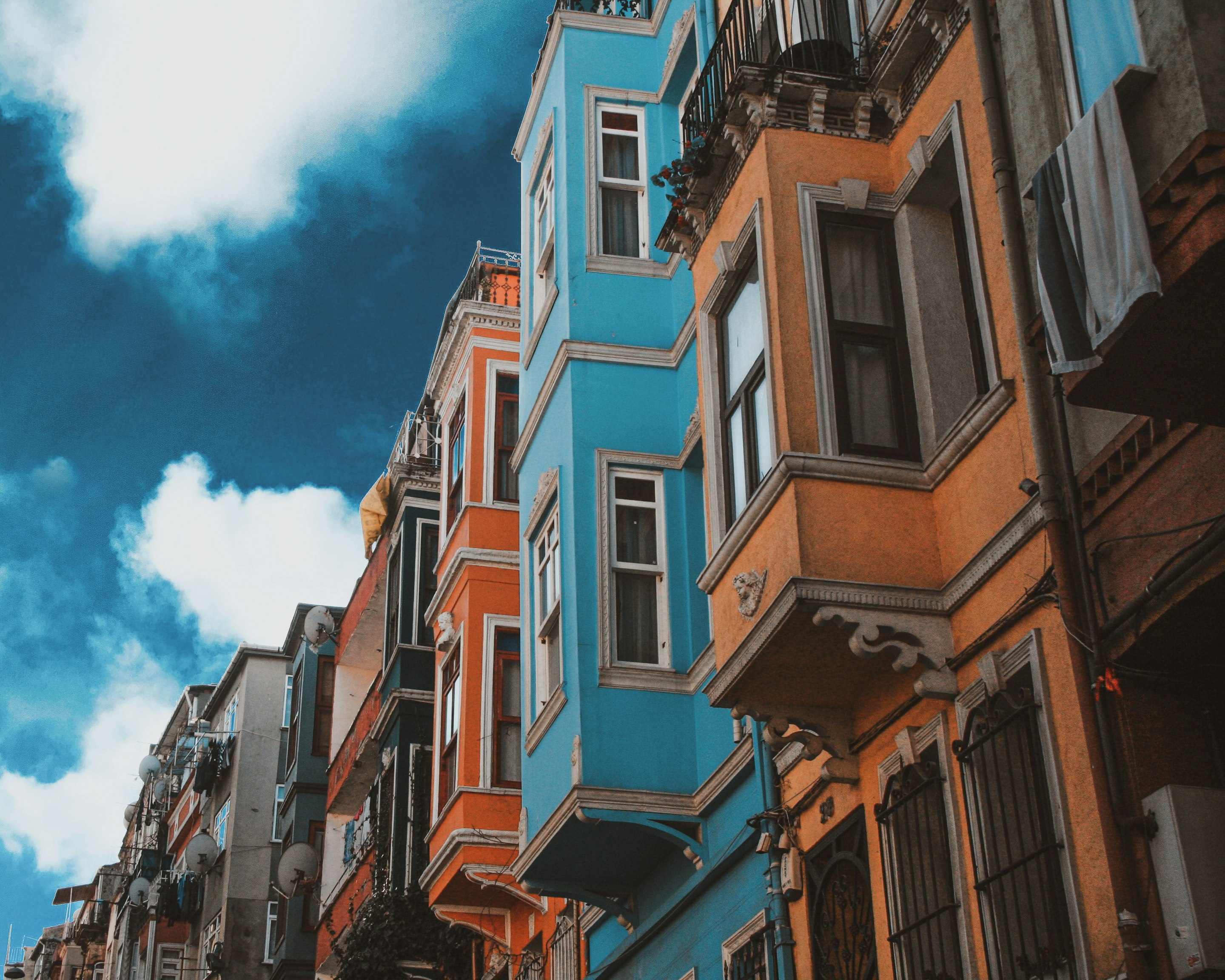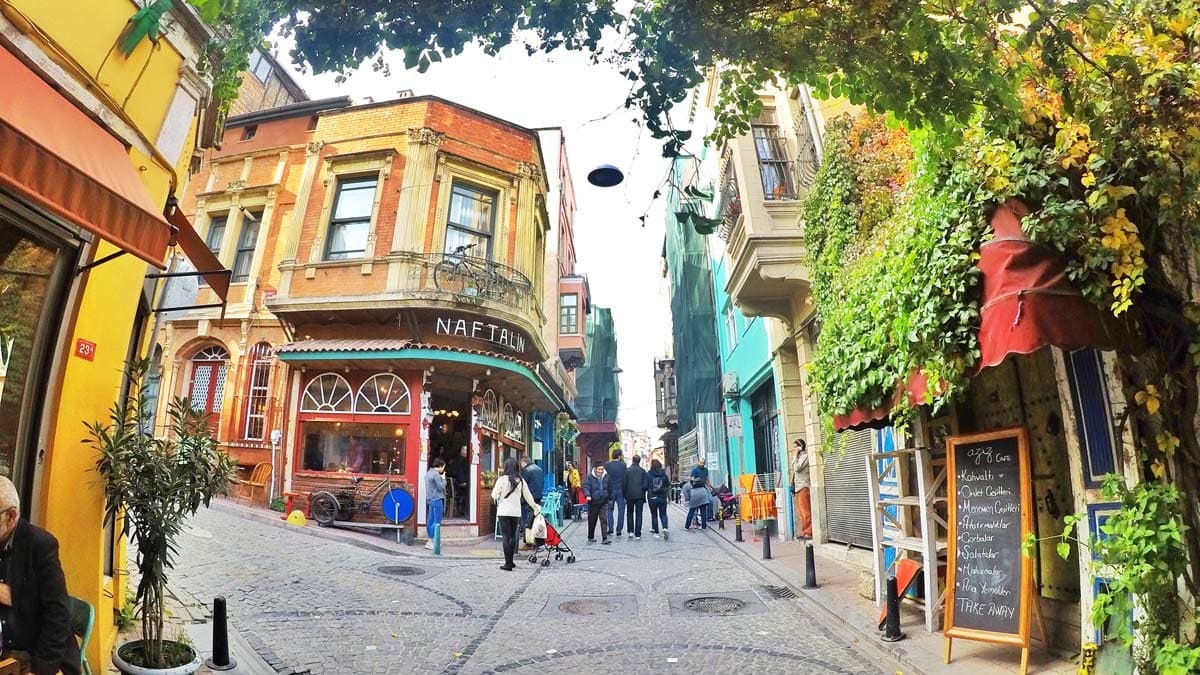Introduction to Balat
Since we launched The Other Tour in 2011, Balat has always been among our main destinations. You might find it hard to believe now, but just 12 years ago, bringing tourists to this historical neighborhood was an unusual spectacle. Fast forward to today, and Balat has become a bustling haven; you can barely stroll down its narrow lanes without bumping into a fellow traveler or a local enjoying the area’s newfound popularity.
Table of Contents
Balat, located on the western shores of the Golden Horn in Istanbul, was historically a Jewish quarter. The area became a significant center for Jews, especially following the expulsion of Jews from Spain in 1492. The Ottoman Empire welcomed these Sephardic Jews, many of whom settled in Balat and contributed to its vibrant community. The area had numerous synagogues, Jewish schools, and businesses.
A Jewish heritage
However, the demographic composition of Balat started to change in the 20th century. The establishment of the Republic of Turkey in 1923 brought several legal and financial reforms that impacted minority communities. The Varlık Vergisi (Wealth Tax) imposed during World War II disproportionately affected non-Muslims, including Jews. Additionally, the founding of Israel in 1948 led some Turkish Jews to emigrate. Over the years, this migration continued for various reasons, including economic opportunities abroad.

Today, the Jewish population in Balat has dwindled significantly, and the area is more ethnically diverse, housing various other communities and barely having a Jewish community today.
Balat’s narrative is a riveting tale of resilience, cultural fusion, and a persistent march towards progress. This quaint neighborhood along the Golden Horn has witnessed the interplay of history, culture, and urban evolution, each epoch leaving indelible imprints on its character.
Through the centuries
History of Balat
1492: A New Beginning
The year 1492 marked the inception of a significant chapter in Balat’s history. The expulsion of Jews from Spain saw Sultan Bayezid II extending an invitation for them to settle in the Ottoman Empire. Balat became a refuge, and soon, a vibrant Jewish community sprang up along its cobbled streets. The area burgeoned as a center of commerce, religion, and culture, knitting a rich tapestry of traditions that would endure through the centuries.
16th to 18th Century
As the centuries rolled on, Balat continued to flourish as a hub for the Jewish, Armenian, and ‘Rum’ (Anatolian Greeks) communities. Each community contributed to the architectural, culinary, and cultural mosaic of the neighborhood. The churches, synagogues, and traditional wooden houses became emblematic of Balat’s diverse heritage.
19th Century: Industrial Onset
The 19th century heralded the onset of industrialization, bringing with it the seeds of change, both prosperous and perilous. Balat’s proximity to the Golden Horn made it a cog in Istanbul’s burgeoning industrial machine. However, the blossoming factories came at an environmental cost. The Golden Horn’s waters began reflecting the shadows of pollution, veiling the natural beauty that had once adorned postcards.
PART II
20th Century
The proclamation of the Turkish Republic in 1923 accelerated industrial activities along the Golden Horn. Balat, with its strategic location, found itself engulfed in a tide of factories that were symbols of modernization yet bearers of environmental degradation. The industrial waste discharged into the Golden Horn left it gasping for breath, its waters a murky testimony to the cost of progress.
1994-1998: The Golden Horn Revival
The narrative took a positive turn when Recep Tayyip Erdoğan, serving as the mayor of Istanbul between 1994 and 1998, envisioned and initiated the Golden Horn Environmental Protection Project.
This ambitious project aimed at resurrecting the Golden Horn‘s ecological vitality. Through meticulous waste management and industrial relocation, the murky waters gradually unveiled their original charm. The Golden Horn started shimmering again, mirroring the azure skies and reigniting the allure of the historic neighborhoods like Balat that nestled along its banks.
21st Century: Renaissance and Urban Chic
The turn of the century saw Balat rediscovering its charm and redefining its narrative. The historic wooden houses, now restored, stood as proud sentinels of a bygone era, while trendy cafes, vintage shops, and art galleries breathed new life into the old streets.

The area morphed into a blend of the old and new, each street a blend of tales past and the promise of tomorrow.
Recent Developments about Balat
The inauguration of the T5 Eminönü–Alibeyköy tram line in 2021 further integrated Balat into Istanbul‘s urban pulse, making it a convenient and enticing destination for both locals and visitors. The restoration projects, coupled with eco-conscious initiatives, have gently cradled Balat into a new era, where the essence of the past melds seamlessly with contemporary zest.

Today, Balat stands as a testament to Istanbul’s enduring spirit and the city’s ability to reimagine and revitalize itself, no matter the challenges history throws its way. As you wander through its colorful streets, sip coffee in its quaint cafes, or reflect by the rejuvenated waters of the Golden Horn, you’re not just experiencing a neighborhood; you’re journeying through the pages of a living, breathing narrative that continues to evolve.

What to do in Balat
Today, Balat has metamorphosed into a haven for both the discerning traveler and the casual wanderer. The streets that once resonated with the melodious cacophony of multiple languages now hum with the chatter of coffee seekers, antiquarians, and photo enthusiasts, drawn to the allure of the famous colorful buildings along Vodina Caddesi.

How about good food?
Your culinary journey in Balat could commence at Pier Cafe Restaurant, a locale revered for its Turkish and healthy dishes, all served with a picturesque backdrop of the Golden Horn.

For the vegetarian or vegan palate, Veganarsist is wonderful.
New Balat Cafe Restaurant extends a warm invitation with its sumptuous Turkish cuisine. If your cravings lean towards a slice of heaven, Forno Balat‘s wood-fired pizzas are a must-try. The cozy retreat of Velvet Cafe Balat offers a traditional Turkish coffee experience amidst a visually charming setting. And for the feline aficionado, a relaxing respite awaits at Cafe Naftalin K, where coffee, tea, and the company of adorable cats promise a purr-fect time.
You like burgers?
Nestled in the heart of Balat, just across the historic Ahrida Synagogue, lies BURGERMOON, a charming gem of culinary delight. Run single-handedly by a dedicated owner, this modest eatery serves up not just burgers, but a testament to the honest, unassuming charm of the neighborhood. It’s a perfect reflection of Balat’s spirit, where every bite is a homage to simplicity and authenticity.
Here is the address: Balat, Tavukçu Çk. no 1, 34087 Fatih/İstanbul
Beyond the gastronomic allure, Balat entices with its treasure trove of vintage and antique shops, where the charm of yesteryears is tenderly cradled in old books, records, and jewelry. The historic narrative continues with a visit to the Chora Museum, a sublime exhibition of Byzantine artistry, albeit with a recent transformation into a mosque, reflecting the ever-evolving dialogue between the city’s past and present.
The artistic spirit of Balat is further enshrined in its local galleries like Figür Art Gallery, and Medusa Vintage Poster Market, each spotlighting the pulsating contemporary art scene of Istanbul.
Historic Landmarks in Balat
The colorful Ottoman-era houses and the narrow, winding streets are landmarks in their own right, offering a glimpse into the daily lives of past and present residents.
Iron Church
The Bulgarian St. Stephen Church in Istanbul, also known as the Bulgarian Iron Church, was completed in 1898. It’s notable for being made of prefabricated cast iron elements, which is a unique construction method for the time and contributes to its historical significance.
Private Fener Greek High School
The educational epicenter of the area is the Phanar Greek Orthodox College, also known as the Red Castle or the Red School. Its distinctive red-brick edifice has overseen the ebbs and flows of time since 1881. The spiritual tapestry of Balat is intricately woven with visits to Saint George’s Church, Ahrida Synagogue, Yanbol Synagogue, and St. Stephen’s Bulgarian Orthodox Church, each a sentinel of the diverse religious heritage.
Balat is also home to historic religious sites like the Ahrida and Yanbol synagogues, which reflect the area’s Jewish heritage, and Armenian churches like Surp Hresdagabet and Surp Kevork, marking the neighborhood’s Armenian cultural roots.
Conclusion
As the sun dips below the horizon, casting a golden glow over the meandering streets of Balat, it’s time to bid farewell to this historical gem nestled on the banks of the Golden Horn. Balat, a district with a story etched in every cobblestone, invites you to become a part of its continuing saga. From the welcoming calls of market vendors to the quiet repose offered by the Iron Church, every corner of this neighborhood is alive with tales of the past and whispers of the future.
Our journey through Balat may come to a close, but the experience lingers on, as vibrant and enduring as the neighborhood itself. As a chapter of ‘The Other Tour‘, exploring Balat offers not just a glimpse into Turkey‘s rich history, but also an intimate encounter with the city’s living heart. We’ve seen firsthand how communities evolve, how history breathes new life into old walls, and how the spirit of Istanbul is as indomitable as the city itself.
For a tour of Balat











Balat looks amazing! I’ve been to Istanbul twice before and never visited Balat. Wow, learning so much from this website. Sorry I’m commenting all your posts 🙂 but I’m reading it all. Thank you!
Thanks Sara 🙂 Let us know if you need a tour guide 🙂
Hey TheOtherTour 🙂 do I really need a tour guide in Balat? Especially after reading this article?? 🙂
Hey Sara,
Okay, so you’re thinking of braving the charmingly chaotic streets of Balat? Forget needing a tour guide – that’s practically admitting you couldn’t handle figuring out this quaint little neighborhood yourself! Sure, wandering aimlessly gets old, and those colorful houses might have some history worth knowing, but hey, who needs context? Of course, if you’re the type who craves intellectual stimulation, maybe shelling out for a guide is the way to go. Just be prepared for the real challenge: finding one who can spin a good yarn without putting you to sleep! 🙂
Warm regards,
Fethi Karatas
The founder of The Other Tour